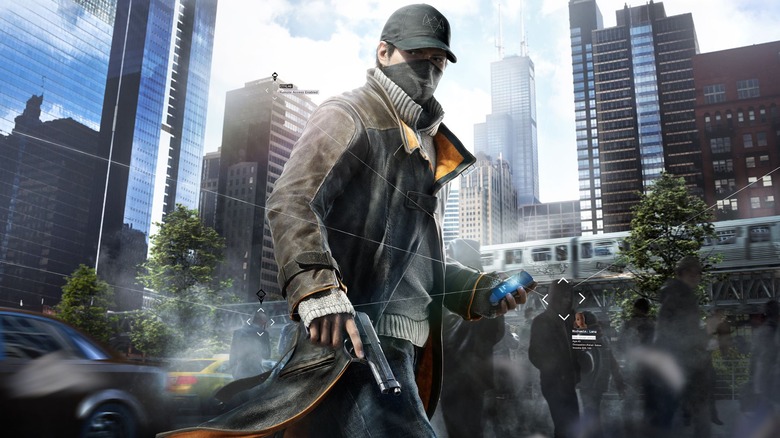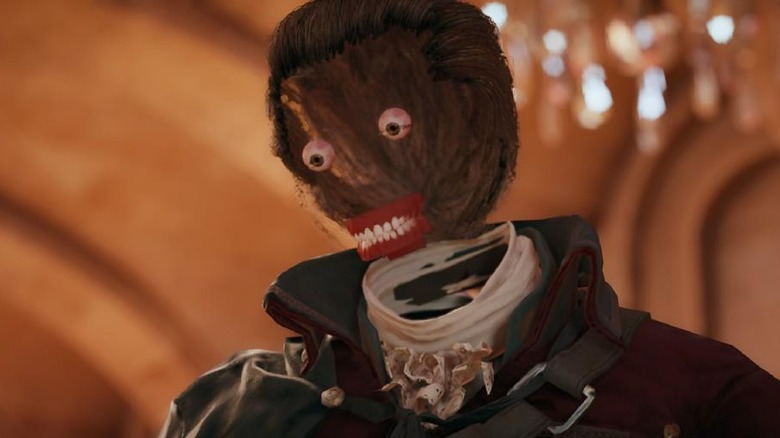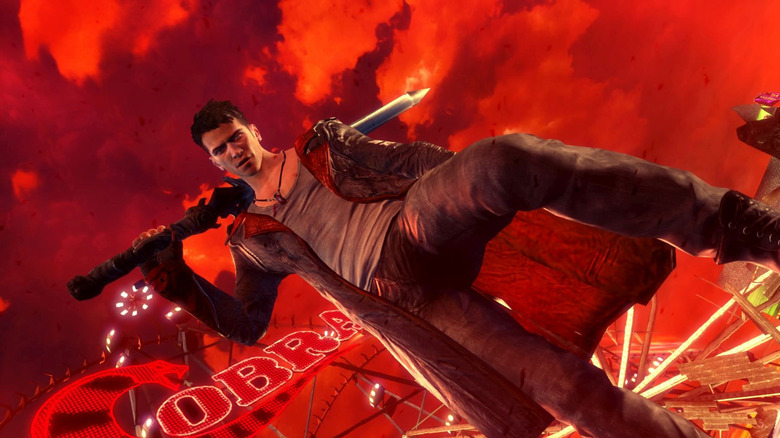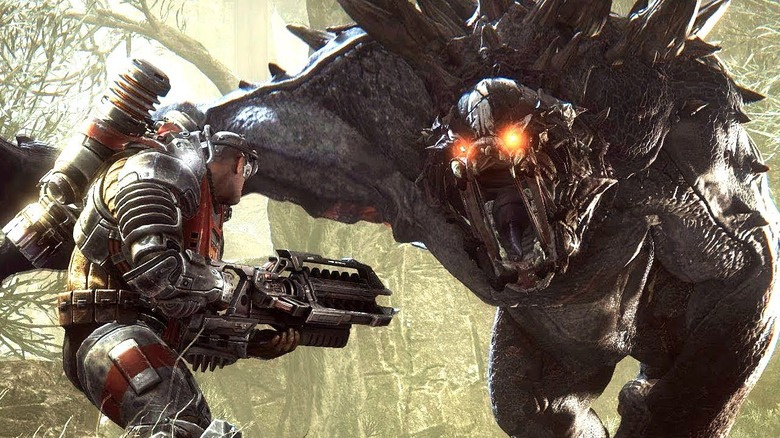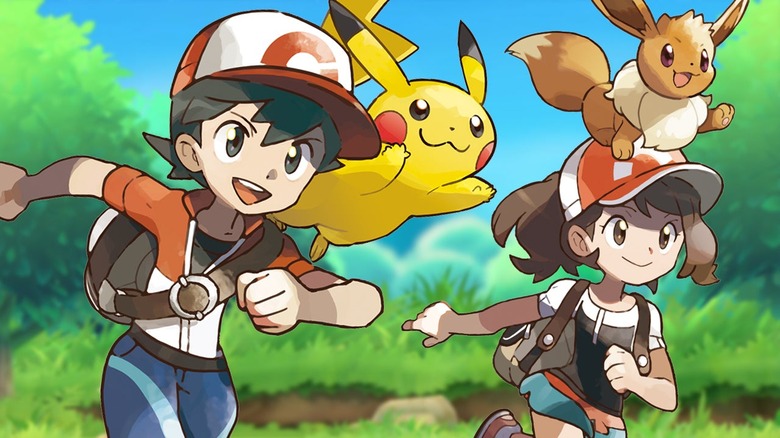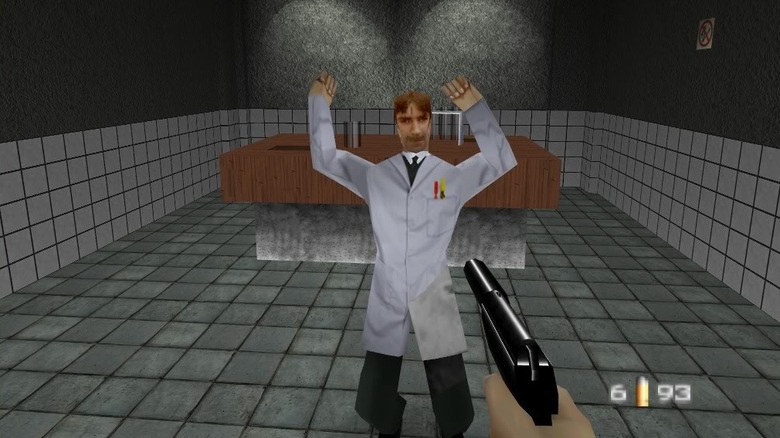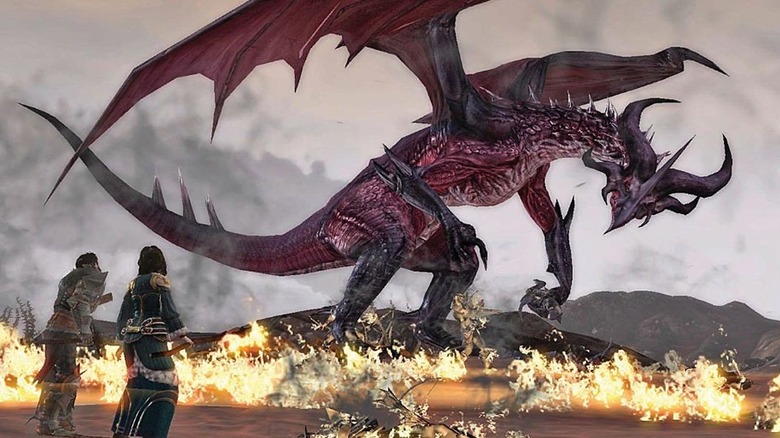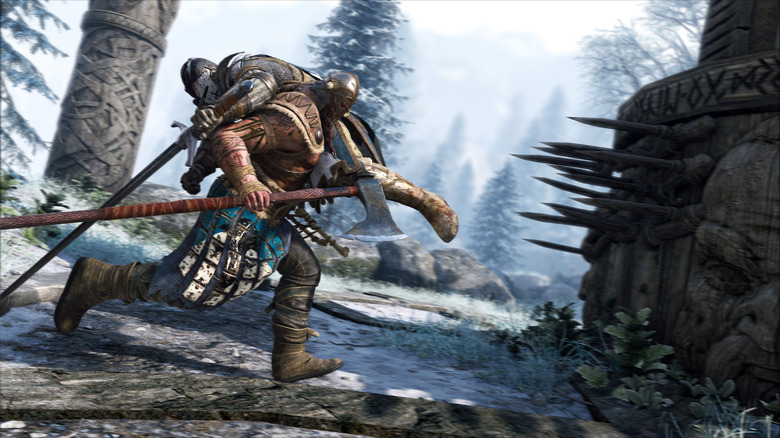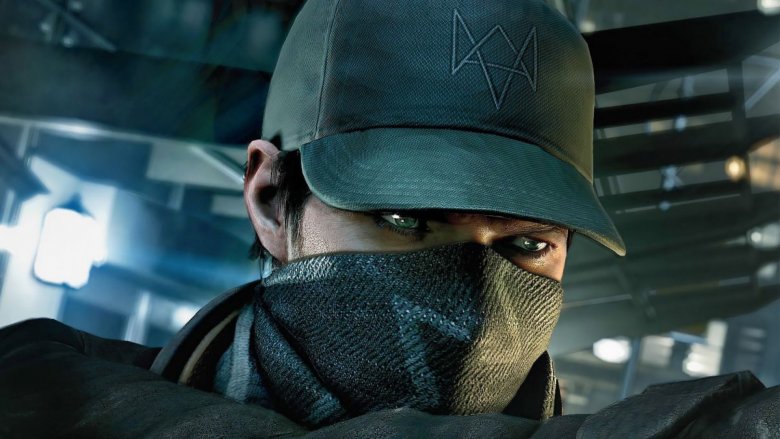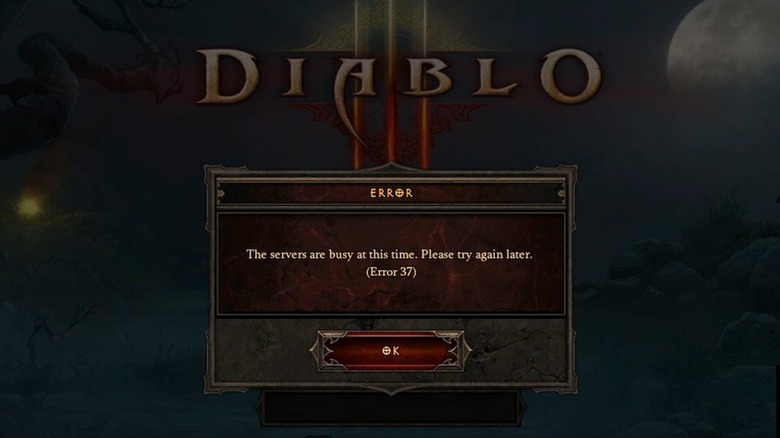Highly Rated Games That Are Actually Terrible
Before we get started, let's step back and take a deep breath, staying mindful that in the end, reviewers are only human. They, too, can be led astray by the flashy hype trains and promising concepts of games that actually end up ... disappointing at best. Sometimes players and critics disagree. One may laud a game as the a must-play, whereas the other will say they wish they never had. These are rare moments, because for the most part, reviewers are careful creatures. They're unlikely to hand out five stars to any old title. It's more likely for them to give a lower, conservative score to a great game than an undeservedly high one to a meh game.
And yet ... here we are. We've collected together the rare instances in which we really are confused as to what reviewers were thinking. Was their review copy somehow optimized? What kind of rose-colored glasses were they wearing when playing (and were can we get some)? Overhyped and criminally overrated, these games have somehow garnered great reviews even as the players themselves pan the title. A potent combination of nostalgia and misplaced optimism gave these games better reviews than they deserved, because seriously, they're actually terrible.
Assassin's Creed: Unity shipped broken
For whatever reason, reviewers don't seem too concerned with games that are broken. They have forgiving eyes, willing to overlook floating eyeballs and characters. Infamously, reviews for 2014's Assassin's Creed: Unity were held until a full 12 hours after the game was available for purchase, so players had no idea what they were getting into. While some publications, like Polygon, were outright blunt about glitches both frustrating and horrifying, others like IGN went ahead and called the game "technologically impressive." Guess they didn't run into the guy with no face.
Fans didn't gloss over the glaring glitches as reviewers did. Many said that they wanted to play the game, but literally couldn't because of how "technologically impressive" it was. For them, the bugs were game breaking, and there were still more problems that further soured them. Before it had even launched, Ubisoft had embroiled itself in controversy when the creative director of the game said it would have been too difficult to add playable female characters. Plus, a senior producer said that the game would be locked in at a subpar resolution and framerate. After launch, it took four patches to fix the game into what it should have been at launch. Assassin's Creed: Unity inspired polarized feelings and a notable discrepancy between reviewers who decided to discount the bugs and players who couldn't and wouldn't.
DmC: Devil May Cry was too angry and edgy
The Devil May Cry franchise is edgy, but in a fun, campy way where it is totally conceivable for the main character to moonwalk in an extended dance sequence when handed a cowboy hat. And also kill demons, crave pizza, and fall behind on rent, all to a rock soundtrack. That's what fans had come to expect, up until Capcom decided that Dante needed to be younger, edgier, and more "Western." Thus, we got a dark-haired, teenaged, angsty smoker who actively made fun of his earlier incarnations.
Even with this drastically different character, the game was largely well-received by reviewers. It still delivered on the fun, smokin' stylin' gameplay from previous games. Fast-paced action, inventive combat, and stunning graphics: what's not to love? The new Dante. DmC became the one we don't talk about because of the way it seemed to disparage previous games and was edgy to the point of cringe for many fans. Some reviewers even went as far as to call out disappointed fans and call them entitled for wanting their old Dante back, telling them to grow up. Yikes. No one said that DmC: Devil May Cry is a bad game, but for many, it is a bad Devil May Cry game for the callous disregard for the series' own audience.
Evolve failed to evolve with its players
Remember running around on the playground, desperately dodging the sticky fingered hands of the person who was "it"? That's kind of what Evolve was going for, but in a bigger, better way. The novel concept pitted a four-person team against a player-controlled beast. In the title's 2015 heyday, it got stunning reviews lauding it for genuine thrills, full of possibilities and fun. So why is it that the game has a lackluster user score on Metacritic?
Reviewers made Evolve out to be the next big thing, but players found themselves bored after a few hours of gameplay. Apparently there are only so many ways to track a monster (or human team) through an alien landscape. Users were also hugely turned off by expensive DLC, skins, and characters when they had already shelled out $60 for the game. (Oh, sweet summer children, just wait for Battlefront.) There was no story to assuage their boredom or inventive content that made the game continually engaging without DLC. It doesn't come as a big surprise that just three years later, the Evolve servers were shut down. All the glowing reviews couldn't save the game then.
Pokemon: Let's Go! - Eevee and Pikachu is for babies
We've already mentioned the danger of nostalgia, a powerful force that can blind people to flaws and failings. You can't get more nostalgic than an outright remake of a beloved classic. Pokemon: Let's Go! – Eevee and Pikachu are quasi-remakes of Pokemon Yellow. The games feature the same story as the original, but with 3D graphics, updated controls, and new mechanics. We don't think anyone would have opposed petting Pikachu in the 1998 game, but the 2018 remakes have gotten some deriding comments from fans because of these new functions.
Reviewers were charmed, and many fans were too, but some players felt babied by the easy gameplay and gimmicky controls. In Let's Go!, motion controls inspired by the mobile game Pokemon Go allow for trainers to catch Pokemon with careful throws of PokeBalls rather than battles with wild Pokemon. Other complaints center around the lack of challenge, with battles easy to win and still easier if players try out the co-op mode. It's so simple, it feels like cheating. Veteran players were perhaps frustrated since it had been a while since a mainline Pokemon game had been released. This kept them from being satisfied with an allegedly "childish" version of the games.
GoldenEye 007 aged poorly
It's not 1997 anymore, so it's safe to say that Rare's GoldenEye 007 isn't that great. There, we said it. The graphics certainly don't hold up to current standards, but even in its heyday, the level design was subpar, the campaign monotonous at best, and don't even get us started on the glitches. And yet IGN called the game "a gem to look at and watch" and "the best single-player first-person game on any system." It was great. Note the past tense. GoldenEye 007 was so good at the time that it more than made up for the bad bits, but today, all we can see are the bad bits. Those who continue to laud it might just have their nostalgia goggles strapped on too tight.
An editor at Kotaku was incredulous and angry upon finding out that the game would be featured in an exhibition entitled Bad Is Beautiful: An Exhibition Exploring Fascinatingly Bad Games at the NYU Game Center. Replying to a terse email, curator Owen McLean admitted that he still loved the game, but it's wrong to say that it is still a "good game" in modern times. It's okay to have an emotional attachment to old titles, but we can't defend clunky controls when we have intuitive ones in modern games. GoldenEye 007 aged poorly, and anyone saying otherwise is feeling the pull of nostalgia.
Dragon Age 2 got dumbed down
So now that we've learned that longtime fans of certain franchises feel insulted by simplified or streamlined mechanics, let's talk about Dragon Age 2. The game typically received star-studded scores, with The Escapist giving it a solid 100. "Dragon Age 2 is the rare sequel that improves upon its already excellent predecessor," wrote reviewer Greg Tito after the game's 2011 release.
By contrast, Dragon Age 2 caught controversy for simplifying mechanics and taking out some of the tactics required to take down foes. It had a serious case of sequelitis: reviewers warned players not to compare it to Dragon Age: Origins, and instead enjoy Dragon Age 2 as its own game. If you were going to criticize it, point out the repetitive environment and linear story. That didn't stop players from wishing that 2 was more like Origins. The debate came down to pro-accessibility reviewers and fans that felt accessibility was a fancy way of saying "dumbed down gameplay and controls."
Eventually, the whole hullabaloo had lead designer Mike Laidlaw weighing in, "If I'm going to piss you guys off, it's going to be because I still firmly believe that RPGs do need to be more accessible to new players. Not diminished, but made less imposing and less terrifying to new players."
For Honor had players winning dishonorably
For Honor suffered a potent combination of overhype and high expectations built by starry reviews and claims that the new and novel combat system would soon be well-loved. Spoiler alert: it wasn't. Players rushed in like an invading army upon release, but soon retreated because of the game's "toxic dumpster fire" matchmaking system. Dueling is difficult, but it's supposed to be that way, right? Ubisoft was going for realism. But bugs and frustrating glitches don't happen IRL. (If they are, see a medical professional immediately.)
A damning example of how the game wasn't yet up to snuff is that one player was able to earn a grand prize of $10,000 by spamming an exploitative glitch that made their attacks unblockable. Months after release, the game wasn't anything like the exciting, sweat-inducing battle simulator that early reviews had described. For Honor took its sweet time with extended patches and updates to be the game that those reviews believed it to be. By then, players were wary from previous experiences and weren't apt to forgive such a dismal first impression. But now the player base is growing again after the initial mass abandonment.
Watch Dogs was all bark, no bite
Many people took one look at the slick marketing for Watch Dogs and had only one thing to say in their very best hacker voice: "I'm in." The game had an original concept and appealing mechanics; you play as hacker Aiden Pearce and his wondrously connected smartphone, able to hack into cars, cameras, and criminals. Who doesn't want to hijack a drone? Blackmail some ne'er-do-wells? For PC Gamer reviewer Christopher Livingston, Watch Dogs made him really "feel like the electronic ghost of Batman: swooping silently between vantage points, peering down at moronic henchmen, picking off enemies one by one."
Players were more like, and we quote, "Watch Dogs looks pretty nice only when in the game is rainy night. Reflections of lights and buildings are really awesome. Everything else is awful. Unplayable type of driving cars and cars are indestructible. AI is extremely stupid. This game is full of bugs. I don't recommend Watch Dogs." Player problems centered around perceived overhype and the feeling that the story gives up halfway through, leaving players to contend with boring missions with little motivation. However revolutionary the idea was at first, players got real sick of hacking after the hundredth time.
Diablo 3 was a disaster at launch
Everyone likes a shiny new sequel in a beloved franchise. No one likes error messages. These are the hard facts that made the launch of Diablo 3 nothing short of disastrous. On launch day in 2012, fans were excited to start a whole new adventure in a game that had taken ten years to develop, so surely it would be amazing, wonderful, incredible. What might be worse than the disappointment of a flop was the frustration that players were given instead. Rather than launching into the game, hundreds of thousands of incredulous eyes stared at the persistent message: "The servers are busy at this time. Please try again later. (Error 37)."
Diablo 3 was getting good reviews. A plethora of content and quality of life improvement begged players to dedicate themselves to marathon sessions. If only they were able to play. When they were finally able to get into the game, their first impressions were perhaps marred by earlier frustration. Rather than being dazzled, they abhorred the new loot system and found flaws in the difficulty leveling. So despite the praise from publications like IGN and PC Gamer, players were unsatisfied with Diablo 3. It's Metacritic score still reflects this, the critics throwing out solid nines and tens while players panned the game with dismal twos and even zeroes. Only updates and overhauls later made the critics' high scores finally match the way fans felt about the game.

